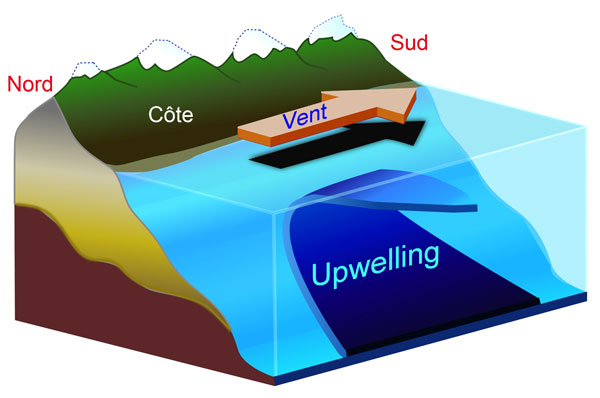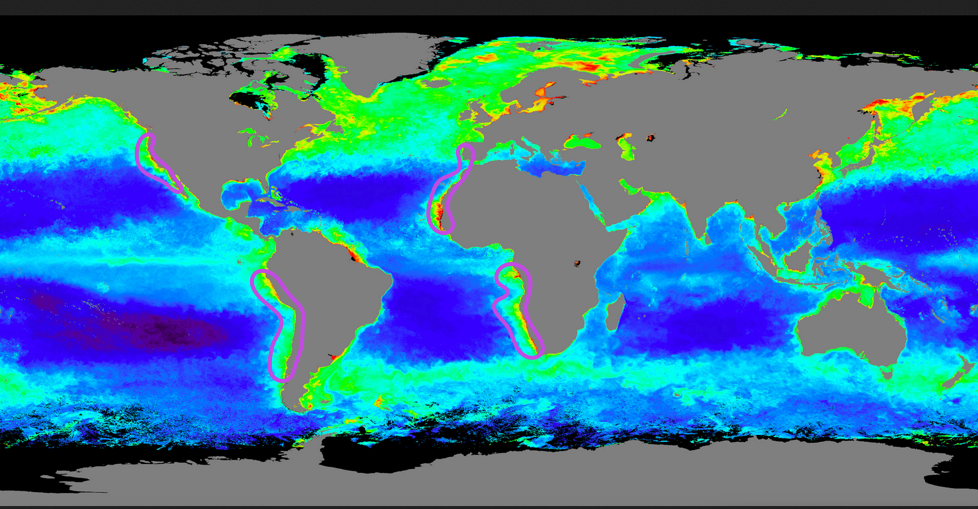Some regions of the world’s coastal ocean, known as upwelling regions, have particularly favourable conditions for the development of marine life.
In these regions, the prevailing winds are oriented in such a way that they tend to drive surface waters offshore. The ocean cannot empty itself of water. Therefore, the surface water, driven offshore, is replaced by water from the subsurface (Fig. 1), which is colder and rich in nutrients. The prevailing winds in upwelling regions are thus responsible for a natural injection of nutrients into the sunlit surface layer. This allows the growth of phytoplankton by photosynthesis. In turn, the abundance of phytoplankton in upwelling areas stimulates the proliferation of marine life higher up in the food chain. As a result, the upwelling regions are among the most productive in the global ocean.

There are 4 major upwelling regions, shown in Figure 2 (to which we could add smaller areas where the winds are locally also favorable to upwelling). These regions are located on the western edges of the continents in the tropics to the temperate latitudes. In the Atlantic, the upwelling areas border Portugal, Morocco, Mauritania, Senegal and Gambia in the northern hemisphere; South Africa, Namibia and Angola in the southern hemisphere. In the Pacific Ocean, the upwelling areas border Mexico and the west coast of the USA (California-Oregon) in the northern hemisphere; Peru and Chile in the southern hemisphere.
From space, the observation of the water color and its chlorophyll content clearly shows the upwelling zones which are among the richest regions in phytoplankton (marine microalgae).
This primary production feeds a food chain composed of zooplankton (marine grazers ranging in size from a few micrometers to several millimeters).

